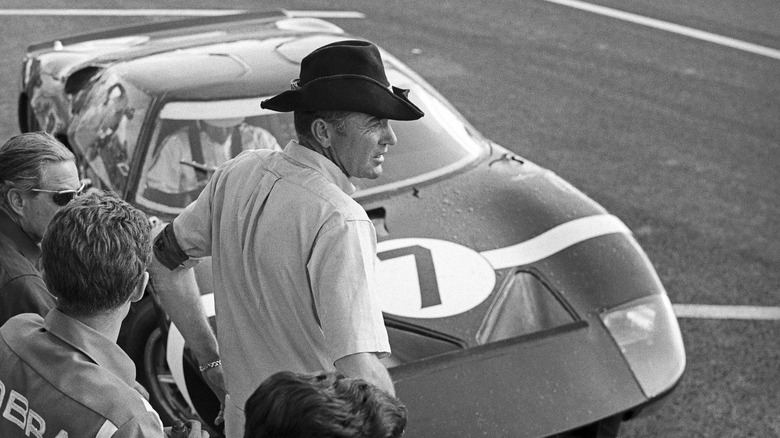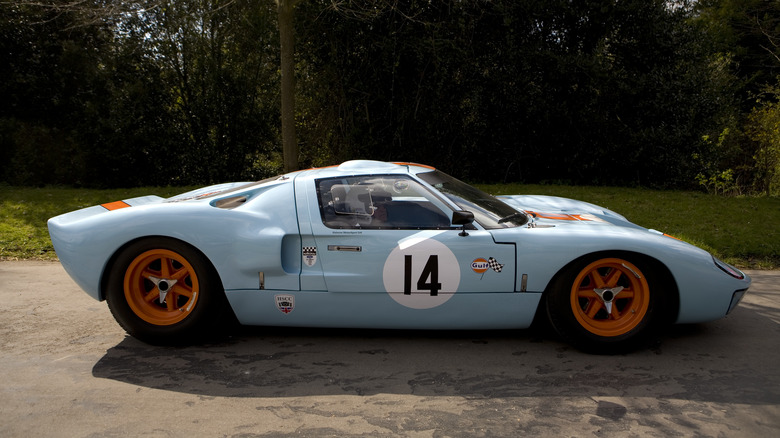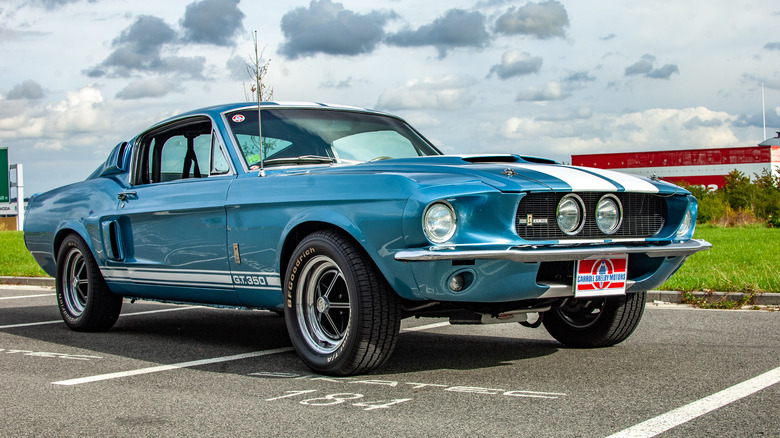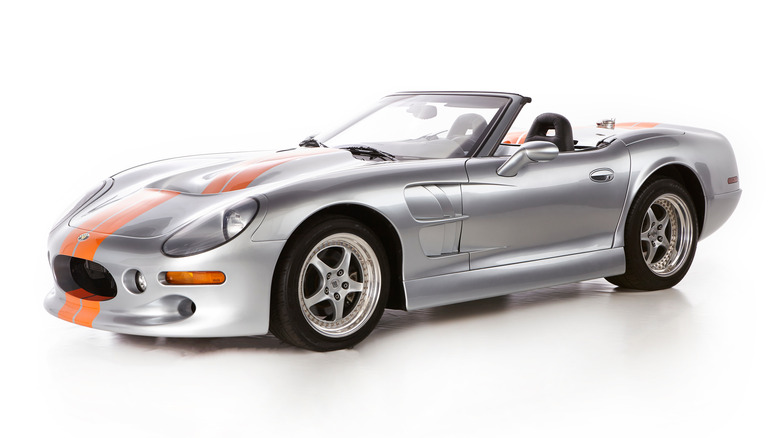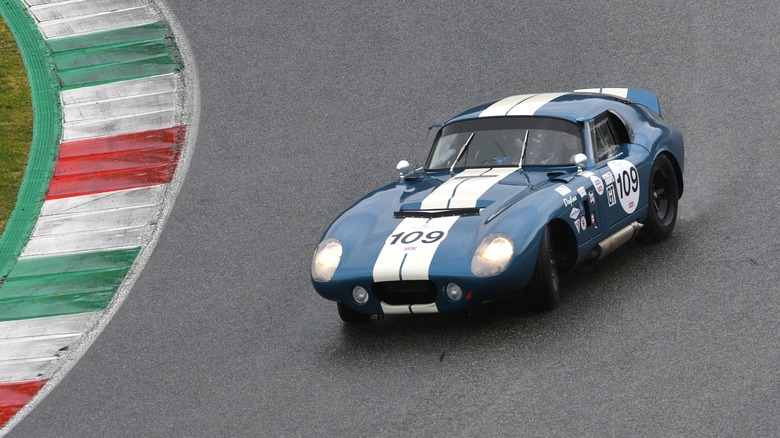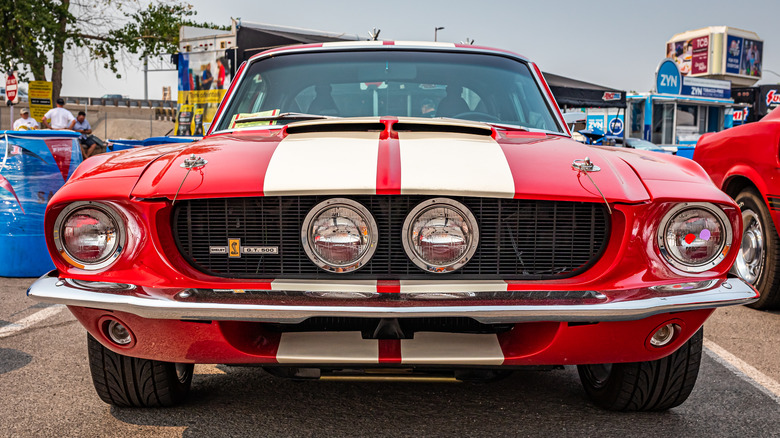6 Cars That Defined Carroll Shelby's Legacy
In the pantheon of automotive legends, few names resonate as profoundly as Carroll Shelby. He was born in 1923 in a tiny Texas town called Leesburg, and his journey from this small town to being a global icon is a tale as thrilling as his cars. After high school, Shelby joined the Air Force, training pilots in World War II. Post-war, he tried different businesses, like a dump truck company and a chicken farm. But his real love was always cars and speed.
Shelby started racing in 1952 and was naturally good at it, winning awards and appearing in sports magazines. However, his racing career, marked by victories against the likes of Ferraris and Jaguars, was cut short by health issues in 1960. He was only 37. This didn't slow him down, though. Shelby turned to designing cars, and that's where he made a big splash. He created the famous Shelby Cobra and worked with Ford to make other fast and much-loved cars. Shelby also helped Dodge in the 1980s by playing a big part in making the Dodge Viper – a modern version of his Cobra.
Despite his declining health, Shelby's later years were marked by a renewed partnership with Ford, leading to the creation of modern classics like the 2005 Ford Shelby GT500. His passing in 2012 left a void in the automotive world, but his legacy lives on. Here are six of his creations that defined it.
Shelby Cobra CSX 2000
The Shelby Cobra CSX 2000 is a real game-changer in car history. It all started when Carroll Shelby, post-retirement from racing, wanted to make his own cars. He had a big idea: mix American muscle with European style in a bid to create a car that would eclipse the Corvette in performance, which led him to England's AC cars in 1961. Here, he found the AC Ace chassis ripe for transformation. It was then that Ray Brock of Hot Rod Magazine introduced Shelby to Ford's nascent small-block V8 engine. Envisioning a powerhouse, Shelby pitched a partnership to Ford.
Intrigued by Shelby's vision, Ford backed him with a 221-cubic-inch V8 engine, later upgraded to a brawnier 260-cubic-inch model, significantly bolstering the car's power. The CSX 2000 was born — Shelby's first car. The prototype was assembled in England, its chassis reinforced, suspension bolstered, and rear end fortified, before its transatlantic voyage to Dean Moon's shop in Los Angeles. There, Shelby and his team toiled, adapting the car to accommodate the powerful Ford engine, a task involving substantial chassis and body modifications.
The CSX 2000 first showed up in 1962 at the New York Auto Show and was sensational. It was painted a bright yellow to stand out in the fluorescent light. Shelby even repainted it a few times to make it look like they had more cars. The CSX 2000 kicked off what is arguably the most iconic and celebrated chapter in American sports car history.
Ford GT40
The Ford GT40 is another famous Carroll Shelby-made race car with a cool backstory. The GT40 story started when Ford tried to buy Ferrari, but the deal fell through. Ford was upset, especially Henry Ford II, leading to a fierce rivalry culminating in one of the most iconic stories in racing history. He wanted to beat Ferrari at their game — the famous Le Mans 24-hour race.
The GT40's journey began under the guidance of Roy Lunn, a brilliant engineer with a vision to create a car that would dethrone Ferrari at Le Mans. Lunn and a skilled team conceptualized a mid-engined race car standing just 40 inches tall — thus, the GT40. Despite its sleek design and innovative engineering, the road to success was fraught with challenges. The GT40's early days were marked by improvisation and a lack of racing expertise within Ford, leading to initial failures and setbacks.
However, the tide turned when Shelby took the helm of the GT40 program. He changed a lot about the GT40. One big change was a bigger, 7.0-liter engine. In 1965, the GT40 started winning, including a big race in Daytona. The defining moment for the GT40, and arguably for Shelby's legacy, came in 1966 at the 24 Hours of Le Mans. In a dramatic display of dominance, Ford GT40s secured the top three positions, shattering Ferrari's reign and marking a monumental achievement for Ford. The GT40 kept improving and won more races, including Le Mans again in 1967, 1968, and 1969.
Shelby GT350
Carroll Shelby made another big splash in the car world with the Shelby GT350 in 1965. This car wasn't just another Mustang; it was something special. It looked cool, with its white paint and blue stripes; it was really fast, and there's a strange story of how the legendary Shelby GT350 Mustang got its name.
The first GT350 came out and turned heads right away. Under the hood, the GT350 housed a powerful 289-CID K-Code engine, outputting an impressive 306 horsepower — a significant boost from its base model. The GT350R variant, limited to just 35 units, pushed this envelope further, delivering 360 horsepower, a remarkable figure at the time.
Shelby also made some design tweaks, including a functional hood scoop, a robust Monte Carlo bar, and 15-inch wheels fitted with Goodyear tires rated up to 130 mph. Racing was also a big part of the GT350's story. Ken Miles won its first race in 1965. This success wasn't fleeting; the GT350 dominated the B-Class circuit for three consecutive years, showing everyone it was a serious racer.
As time went on, the GT350 changed. The 1966 version was more comfortable and came in different colors. There was even a special model for a rental car company that looked fancy in black and gold. Shelby kept making new versions of the Mustang, each with its cool features and improvements. Today, these cars are highly sought after by collectors, and they're worth much more than when they were new.
Shelby Series 1
At this point, Carroll Shelby was famous for making fast cars go faster, but the Shelby Series 1 was his first try at building a car from scratch. In the 1990s, Shelby dreamed of making a car that could stand toe-to-toe with the best sports cars from Europe. But making this dream car wasn't easy.
He teamed up with Oldsmobile for support and its V8 engine, but problems popped up pretty soon. Oldsmobile changed its mind about helping, leaving Shelby in a tough spot. The manufacturing phase had its own set of problems. The carbon fiber body had problems and needed extra work, making the car heavier than planned.
They also had trouble with the gearbox and getting the engine to be as strong as they wanted. When it was finally ready, the Series 1 was good but not great. It had a strong 320 hp engine and balanced handling but wasn't as powerful as people hoped. Inside, the car was comfortable but borrowed elements from various GM models, creating a somewhat disjointed aesthetic.
There were more delays, and the price increased, making people less excited. Ultimately, only 249 out of 500 cars were fully made, with the rest sold as kits for people to build themselves. Even though it wasn't a huge hit, the Shelby Series 1 deserves to be a defining car of his legacy. It shows Shelby's courage in trying to make his car. It wasn't perfect, but it was a bold step for him.
Shelby Cobra Daytona Coupe
The Shelby Cobra Daytona Coupe goes hand in hand with the Ford GT40 as both cars were built and raced around the same time and context — the Ford v Ferrari rivalry.
The Daytona Coupe was a masterstroke of aerodynamics, largely credited to Peter Brock. At a time when aerodynamic design was more guesswork than science, Brock sketched a car that broke the mold. With a lower, flattened hood and a Kamm tail, the Daytona Coupe was starkly different from its contemporaries. Despite skepticism, the car's performance was nothing short of miraculous. Its first test at Riverside by Ken Miles shattered expectations, proving its capability to outperform even Carroll Shelby's own King Cobra.
The car's racing debut, though fiery (quite literally due to a pit stop fire at Daytona), did not dampen its spirit. The Daytona Coupe clinched its first class victory at the 1964 12 Hours of Sebring, heralding a new era in GT racing. The heart of the Daytona Coupe was its engine, a 289 V8. It wasn't the biggest or fanciest engine, but it was powerful. The car also had a special four-speed transmission and a strong frame. It was built to go fast and handle well on the race track. Today, the Shelby Cobra Daytona Coupe is a part of history, reminding us of a time when a small team led by a man with a big dream took on the biggest names in racing and won.
Ford Shelby GT500
The story of the GT500 starts in the 1960s. Carroll Shelby and Ford worked together to make a fresh and improved version of the Ford Mustang. First, they made the GT350, which was great, but Shelby wanted something even more powerful. That's how the GT500 came about in 1967. It had a massive 428 cubic-inch V8 engine and became an instant hit.
In 1967, the GT500 had 355 horsepower and could go from 0 to 60 mph in just 6.5 seconds. By 1968, they made an even more powerful version called the GT500KR, or "King of the Road." It was faster and stronger than the first GT500. Performance aside, this car secures a place on this list as one of the most popular cars Shelby has ever made.
In 1969, as Shelby's focus shifted to personal projects, Ford took the reins in the car's development, leading to a redesign and, ultimately, the end of the first generation of GT500s. The GT500 came back in 2007 with a new look and more power. It had a supercharged engine and, by 2014, could reach up to 662 horsepower. These newer models are not just fast cars but also collector's items. The latest GT500 model came out in 2022. It's called "Predator" and has a massive 760 horsepower. This car is a tribute to everything Shelby did in the car world.
